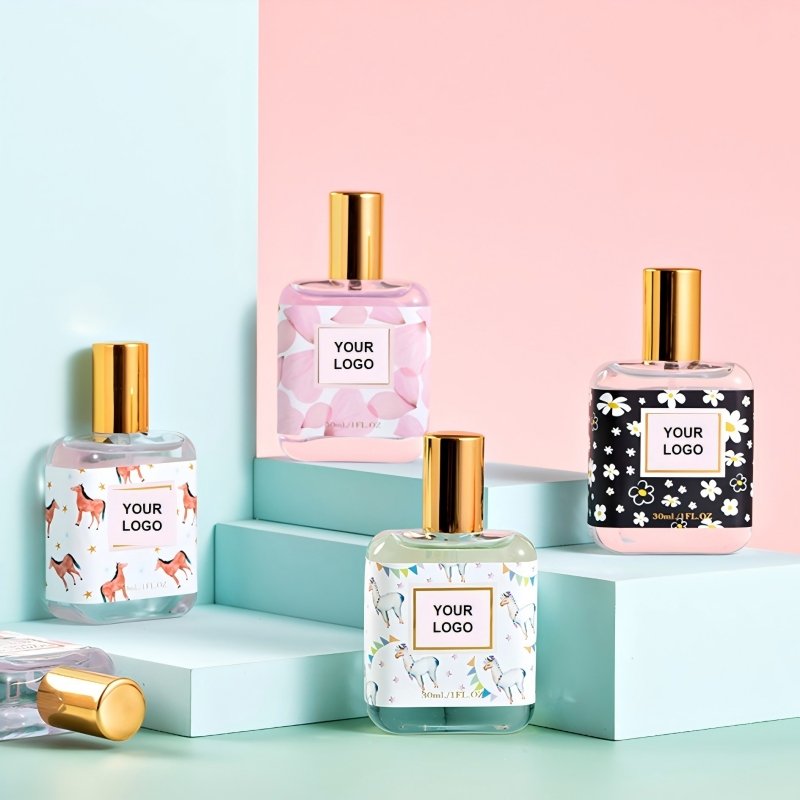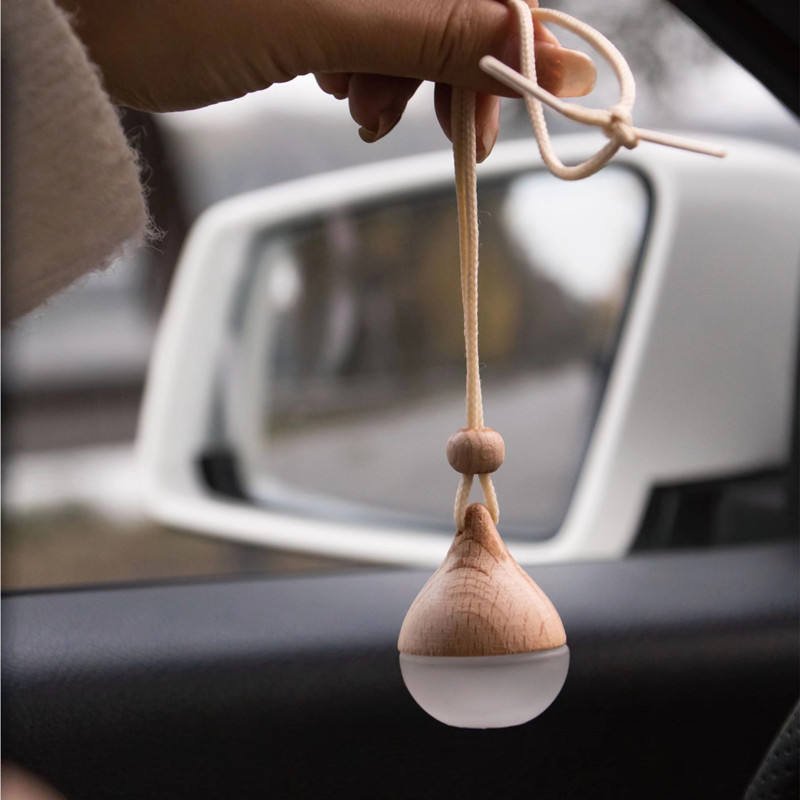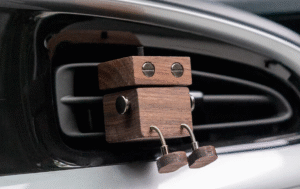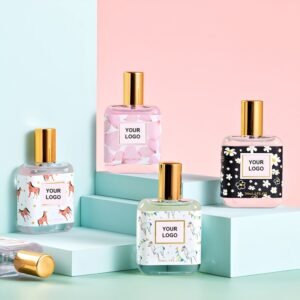Startup fragrance brands face overwhelming product choices that can make or break their market entry success.
Strategic product selection determines brand positioning, target market access, and distribution channel opportunities. Scented candles establish premium positioning, reed diffusers appeal to convenience-focused consumers, room sprays offer versatile applications, and car air fresheners expand beyond traditional home fragrance markets.

Understanding how each fragrance product type serves distinct market segments guides informed business decisions for sustainable growth.
How Do Scented Candles Position Your Brand in the Premium Market Segment?
Many startup fragrance brands struggle to establish credibility in the luxury market. Generic products flood the market. Scented candles offer the perfect solution for premium brand positioning.
Scented candles position brands in the premium market through sensory storytelling, craftsmanship emphasis, and luxury packaging that commands higher price points while building emotional connections with target consumers.
The Sensory Premium Experience
Scented candles create a multi-sensory experience that justifies premium pricing. Unlike basic home fragrance products, luxury candles engage sight, smell, and touch simultaneously. The visual appeal of elegant wax textures combined with sophisticated fragrance profiles establishes immediate perceived value. Premium consumers pay for the complete sensory journey, not just scent delivery.
The luxury candle market reached $603.1 million in 2024, with scented varieties capturing 89.7% of revenue. This dominance reflects consumer willingness to invest in products that transform spaces into premium experiences. Your brand benefits from this established market preference for scented over unscented options.
Strategic Market Positioning Through Distribution Channels
Smart distribution channels amplify premium positioning. Boutique retailers and high-end department stores naturally elevate brand perception compared to mass market placement. The table below illustrates how different channels impact brand positioning:
| Kanał dystrybucji | Premium Perception | Target Market Access | Kontrola marki |
|---|---|---|---|
| Luxury Department Stores | Bardzo wysoka | Affluent consumers | Średni |
| Boutique Retailers | Wysoki | Curated audience | Wysoki |
| Online Direct-to-Consumer | Średnio-wysoki | Broad reach | Bardzo wysoka |
| Mass Market Retail | Niski | Price-conscious buyers | Niski |
Loveeno’s flexible manufacturing capabilities support various packaging configurations, enabling brands to adapt products for different premium distribution channels while maintaining consistent quality standards. The longer lead times associated with candle production require strategic planning, but this exclusivity further enhances premium positioning.
Why Are Reed Diffusers the Low-Maintenance Choice for Modern Consumers?
Busy consumers seek fragrance solutions that deliver consistent scent without constant monitoring. Reed diffusers eliminate daily maintenance hassles while providing elegant home ambiance.
Reed diffusers offer continuous fragrance release through natural reed sticks without requiring electricity, flames, or frequent refills. Their passive diffusion system makes them ideal for busy lifestyles seeking effortless scent enhancement.

Set-and-Forget Convenience Appeals to Target Market
Modern consumers prioritize products that integrate seamlessly into their routines. Reed diffusers perfectly align with this preference by offering months of consistent scent with minimal intervention. The target market for these products includes busy professionals, parents, and anyone seeking hassle-free home fragrance.
Unlike candles requiring supervision or electric diffusers needing regular cleaning, reed diffusers operate independently. Simply insert reeds into the scent profile vessel and enjoy weeks of automatic fragrance distribution. This convenience factor makes them the best fragrance product for retail brand positioning in the low-maintenance category.
Market Performance Reflects Consumer Preferences
The reed diffuser market demonstrates strong consumer adoption, with North America leading at 41.77% market share in 2023. Industry projections indicate growth from $0.9 billion in 2025 to $1.5 billion by 2034, reflecting sustained demand for convenient fragrance solutions.
| Cecha | Dyfuzory trzcinowe | Świece | Electric Diffusers |
|---|---|---|---|
| Poziom utrzymania | Minimalny | Wysoki | Średni |
| Obawy dotyczące bezpieczeństwa | Brak | Fire risk | Electrical |
| Czas trwania | 2-3 miesiące | 40-60 godzin | Daily refills |
| Supervision Required | Nie | Tak | Occasional |
Reed diffusers dominate the home fragrance segment, accounting for over 40% of market revenue in 2024. This success stems from their ability to provide continuous scent without the monitoring requirements of alternative products, making them particularly attractive to retail brands seeking reliable inventory turnover.
What Makes Room Sprays the Versatile Solution for Diverse Applications?
Fragrance brands struggle to find products that can adapt across multiple distribution channels and target markets. This limitation restricts brand growth and market penetration. Room sprays emerge as the ultimate versatile solution that fits every business model.
Room sprays offer unmatched versatility through instant application, diverse scent options, and adaptable packaging that aligns with any brand identity across multiple distribution channels.
Instant Market Adaptability Across Distribution Channels
Room sprays excel in both online and offline distribution channels due to their lightweight nature and compact packaging. Unlike candles that require careful shipping considerations or diffusers that need extensive product demonstrations, room sprays translate seamlessly across e-commerce platforms and specialty retail stores. The product’s immediate usability appeals to online shoppers seeking instant gratification, while the tactile spray experience satisfies in-store customers who prefer hands-on testing.
For startup fragrance brands, this distribution flexibility reduces market entry barriers. Loveeno’s room spray collection demonstrates how strategic product positioning can capture both premium boutique markets and mass retail segments through packaging variations that maintain scent integrity while adapting to different price points.
Target Market Versatility Through Fragrance Product Types
Room sprays accommodate diverse target markets through extensive scent customization and application methods. The same base formula can target luxury hospitality clients through sophisticated woody notes or appeal to wellness-focused consumers via aromatherapy blends. This adaptability allows brands to test market segments without significant inventory investments.
| Segment rynku | Preferred Scent Profile | Packaging Focus | Czas realizacji |
|---|---|---|---|
| Luxury Hotels | Complex, layered fragrances | Premium glass bottles | 2-3 tygodnie |
| Home Wellness | Essential oil blends | Eco-friendly materials | 1-2 tygodnie |
| Retail Mass Market | Fresh, universally appealing | Cost-effective spray bottles | 1 tydzień |
| Boutique Stores | Unique, artisanal scents | Customizable labels | 2-4 tygodnie |
The shorter lead times compared to candles or reed diffusers enable rapid market response and seasonal adaptation, making room sprays the strategic choice for agile fragrance brands building their market presence.
How Can Car Air Fresheners Expand Your Brand’s Reach Beyond Home Fragrance?
Your fragrance brand needs untapped markets. Home fragrance is saturated. Car air fresheners offer fresh distribution channels and broader customer reach.
Car air fresheners unlock new retail opportunities through automotive stores, gas stations, and convenience outlets that home fragrance products rarely access. This product category extends brand visibility into daily commuter routines.

Strategic Distribution Channel Expansion
Car air fresheners open distribution channels unavailable to traditional home fragrance products. While candles and room sprays compete for shelf space in home goods sections, automotive air fresheners claim dedicated retail real estate in gas stations, auto parts stores, and convenience shops. The North American car air freshener market reached $983.45 million in 2024, with offline retail capturing 67.28% of revenue share.
This expansion multiplies your brand touchpoints. Supermarkets and hypermarkets represent 43.5% of car air freshener distribution channels, creating cross-selling opportunities where customers discover your brand while shopping for essentials. Gas stations provide high-frequency exposure as drivers refuel weekly, building consistent brand recognition.
Scent Profile Adaptations for Mobile Environments
Vehicle environments demand different scent profiles than home spaces. Cars require stronger, longer-lasting fragrances to combat confined air circulation and competing odors. The best fragrance product for retail brand success in automotive markets features concentrated formulations that maintain potency in temperature variations.
| Product Category | Intensywność zapachu | Czas trwania | Retail Markup |
|---|---|---|---|
| Samochodowe odświeżacze powietrza | Wysoki | 30-60 dni | 40-60% |
| Home Candles | Średni | 20-40 hours | 50-70% |
| Spraye do pomieszczeń | Niski-średni | Instant | 45-65% |
Loveeno’s expertise in scent formulation translates effectively to automotive applications, where packaging flexibility allows brands to maintain visual identity while adapting to hanging, vent-clip, or dashboard formats. This product diversification reduces seasonal dependence common in home fragrance sales.
Wnioski
Strategic fragrance product types determine startup brand success across diverse target markets. Scented candles establish premium positioning, reed diffusers capture convenience-focused consumers, room sprays offer maximum versatility, and car air fresheners expand beyond traditional home fragrance distribution channels. Choose product positioning that aligns with your target market and distribution strategy to maximize market impact.
FAQ
Q1: What are the main fragrance product types and their positioning strategies?
The main fragrance product types include Eau de Parfum (15-20% concentration for evening wear), Eau de Toilette (8-15% for daily use), Eau de Cologne (2-4% for light wear), and body mists. Positioning strategies vary by target market – luxury brands focus on EDPs for premium positioning, while mass-market brands may emphasize EDTs and body mists for broader accessibility. Scent profile selection should align with brand identity, with floral and fresh notes appealing to younger demographics and woody/amber notes targeting sophisticated consumers.
Q2: How do distribution channels affect fragrance product selection for startups?
Distribution channels significantly impact product selection strategy. Direct-to-consumer startups often focus on niche scent profiles and unique packaging to stand out online, while retail-focused brands need products that perform well in physical stores. E-commerce brands can experiment with smaller batch sizes and seasonal scents, whereas wholesale distribution requires standardized products with consistent supply chain capabilities. Boutique retailers typically prefer artisanal candles and diffusers with longer lead times, while mass-market channels favor sprays and mists with faster turnaround.
Q3: What factors should startups consider when choosing their fragrance scent profile?
Startups should consider target market demographics, brand positioning, and competitive landscape when selecting scent profiles. Key factors include: consumer age group preferences (younger audiences prefer fresh/citrus notes, mature audiences favor woody/amber), seasonal trends, cultural preferences in target markets, and brand story alignment. Additionally, consider production complexity – complex scent profiles may require longer development times and higher costs, while simpler profiles can be brought to market faster with more consistent quality control.
Q4: How does supply chain timing vary across different fragrance product types?
Supply chain timing varies significantly by product type. Candles typically have the longest lead times (6-12 weeks) due to wax curing and testing requirements. Diffusers and room sprays require 4-8 weeks for formulation stability testing. Personal fragrance products like EDP and EDT have 2-6 week lead times for alcohol-based formulations. Body mists and colognes can be produced in 1-4 weeks. Startups should plan production schedules accordingly, with candles requiring earlier commitment and personal fragrances allowing for more flexible inventory management.
Q5: What are the key differences in target market positioning between luxury and mass-market fragrance products?
Luxury fragrance positioning focuses on exclusivity, craftsmanship, and premium ingredients, targeting affluent consumers through high-end retail and limited distribution. Mass-market positioning emphasizes accessibility, value, and broad appeal, targeting wider demographics through multiple retail channels. Luxury brands typically use higher concentration formulas (EDP) with complex scent profiles, while mass-market favors EDT and body mists with simpler, more universally appealing notes. Distribution channels also differ – luxury relies on department stores and boutiques, while mass-market utilizes drugstores, supermarkets, and online marketplaces.




